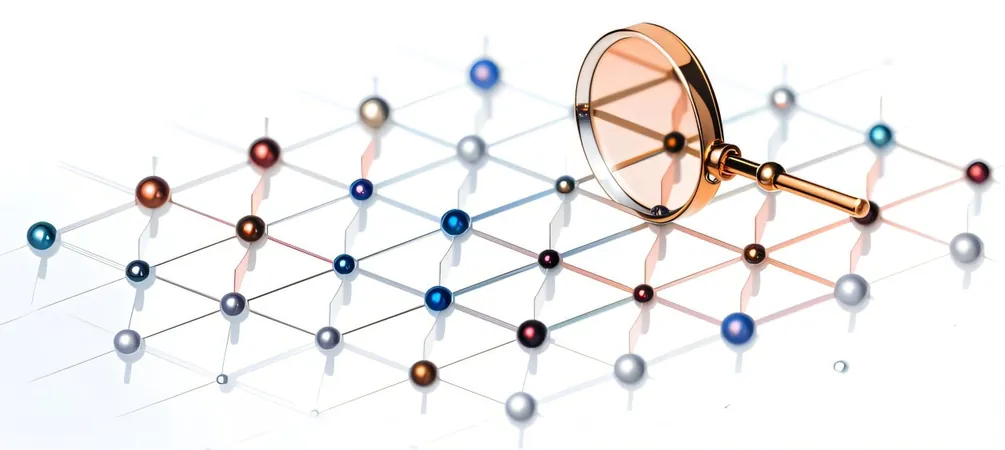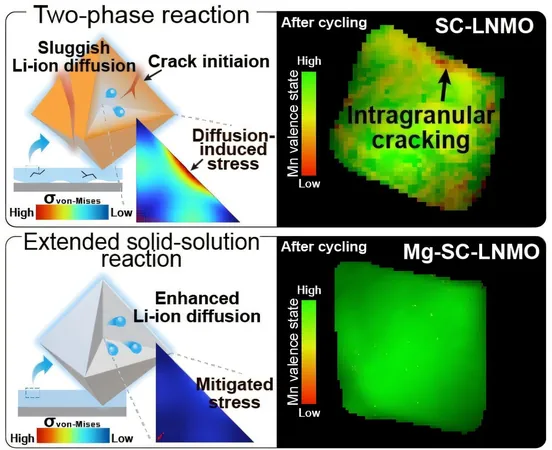
Revolutionary Algorithm Unveils Secrets of Quantum Entanglement Microscopy in Many-Body Systems
2025-01-23
Author: Jia
Quantum Entanglement: A Gateway to Understanding Complex Systems
Quantum entanglement remains one of the most fascinating yet perplexing phenomena in physics, where particles become interconnected regardless of the distance between them. This enigmatic behavior is pivotal in unraveling the complexities of quantum systems, and a recent breakthrough by a team from The University of Hong Kong (HKU) promises to enhance our understanding significantly.
In a groundbreaking study, researchers have developed an innovative algorithm known as 'entanglement microscopy' that allows scientists to visualize and map this extraordinary quantum phenomenon at a microscopic level. This represents a monumental step forward in the study of quantum entanglement, a phenomenon famously dubbed 'spooky action at a distance' by Albert Einstein.
Unmasking the Intricacies of Quantum Systems
Led by Professor Zi Yang Meng, alongside Ph.D. students Ting-Tung Wang and Menghan Song from HKU's Department of Physics, and in collaboration with Professor William Witczak-Krempa and Ph.D. student Liuke Lyu from the University of Montreal, the research team has intricately delved into the hidden structures of quantum entanglement across complex many-body systems. Their findings have been documented in the esteemed journal, *Nature Communications*, under the title "Entanglement microscopy and tomography in many-body systems."
The essence of quantum entanglement can be likened to rolling two dice in different locations, where the outcome of one die invariably dictates the outcome of the other, transcending physical distances. This fundamental aspect of physics is not merely theoretical; it serves as the cornerstone for advancing technologies such as quantum computing, secure communications, and even the exploration of exotic states of matter and black holes.
However, capturing the intricacies of entanglement in quantum many-body systems has long posed significant challenges due to the vast degrees of freedom involved. The implementation of the newly devised 'entanglement microscopy' utilizes large-scale quantum Monte Carlo simulations that focus on extracting entanglement information from minute sections of these complex systems.
Discoveries that Could Transform Technology
The researchers concentrated their efforts on two-dimensional models—the transverse field Ising model and the fermionic t-V model—unearthing revelations about the nature of entanglement. Notably, they found that at the Ising quantum critical point, entanglement is limited to short ranges, suggesting that particles are only connected over small distances. This connection can abruptly disappear due to variations in distance or temperature, a phenomenon termed 'sudden death.'
Conversely, the analysis of the fermionic transition exhibited a gradual reduction in entanglement at larger separations, allowing particles to sustain their linkage even when distanced. Fascinatingly, in two-dimensional Ising transitions, the presence of three-party entanglement was absent, while it thrived in one-dimensional systems, indicating that the dimensionality of a system substantially impacts entanglement dynamics.
This can be analogized to social groups; smaller circles facilitate deeper connections, while larger networks often dilute interpersonal ties.
What This Means for the Future
The implications of this research are profound. A clearer understanding of quantum entanglement could lead to notable advancements in quantum computing technologies. Optimizing hardware and algorithms could lead to unprecedented speeds in cryptography and artificial intelligence tasks. Moreover, this new approach holds potential for developing next-generation quantum materials, significantly impacting fields such as energy, electronics, and superconductivity.
The promise of this entanglement microscopy algorithm extends beyond theoretical frameworks; it could redefine our grasp of fundamental physics, paving the way for future innovations in quantum simulations applicable in chemistry and biology.
As research in quantum mechanics continues to evolve, this breakthrough signals an exciting chapter in the quest to comprehend the intricate tapestry of our universe, where the quirks of the quantum world intersect with technological advancements and real-world applications.



 Brasil (PT)
Brasil (PT)
 Canada (EN)
Canada (EN)
 Chile (ES)
Chile (ES)
 Česko (CS)
Česko (CS)
 대한민국 (KO)
대한민국 (KO)
 España (ES)
España (ES)
 France (FR)
France (FR)
 Hong Kong (EN)
Hong Kong (EN)
 Italia (IT)
Italia (IT)
 日本 (JA)
日本 (JA)
 Magyarország (HU)
Magyarország (HU)
 Norge (NO)
Norge (NO)
 Polska (PL)
Polska (PL)
 Schweiz (DE)
Schweiz (DE)
 Singapore (EN)
Singapore (EN)
 Sverige (SV)
Sverige (SV)
 Suomi (FI)
Suomi (FI)
 Türkiye (TR)
Türkiye (TR)
 الإمارات العربية المتحدة (AR)
الإمارات العربية المتحدة (AR)